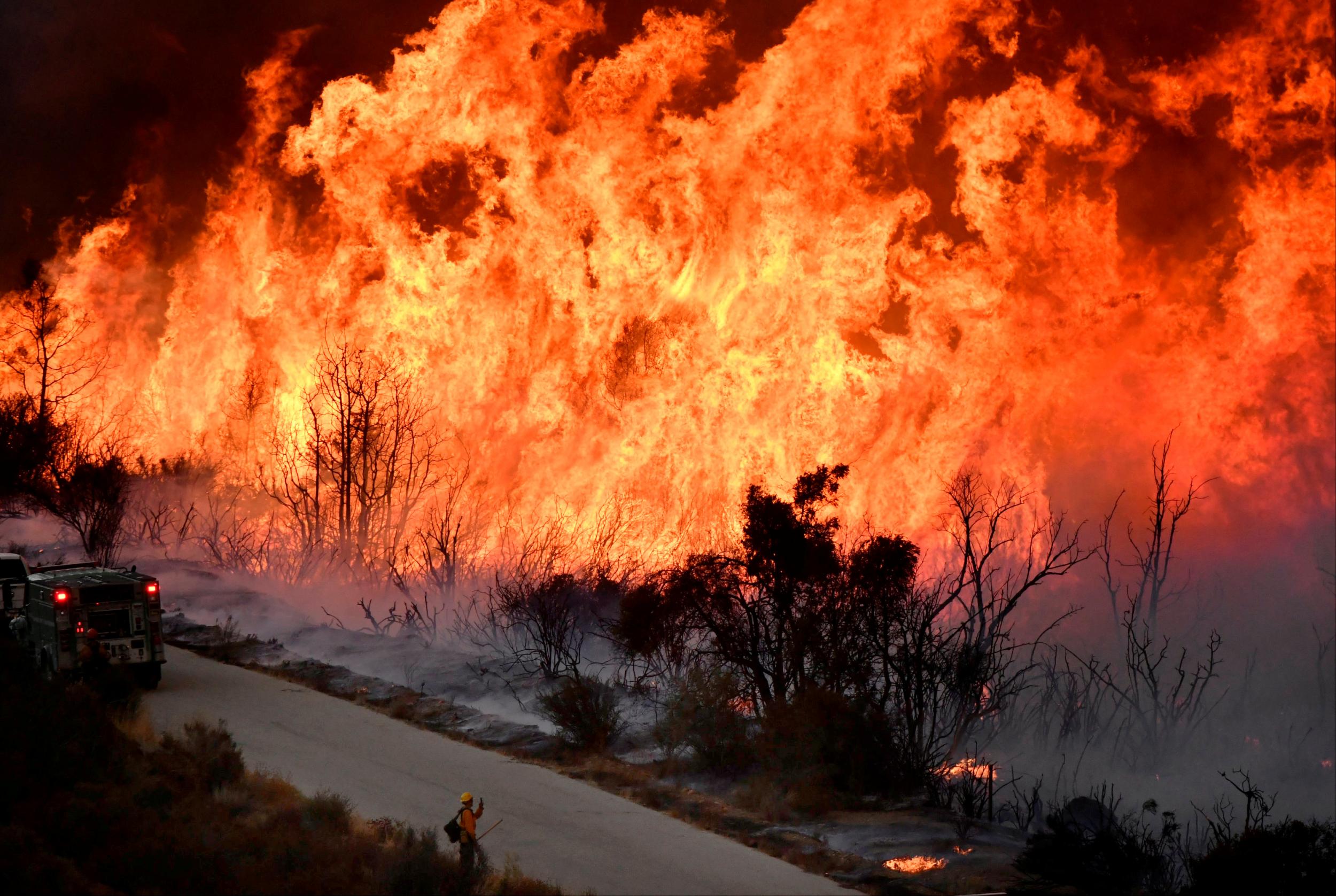Global temperature figures show 2017 one of world's hottest years on record
‘Forget what the sceptics will tell you, climate change is real and is happening right now’

Last year was one of the hottest years ever, according to new temperature data.
Provisional figures published by the Met Office and the University of East Anglia’s Climatic Research Unit shows 2017 was the third warmest on record and the hottest ever without El Niño – a natural phase of the climate system that results in warmer temperatures in the Pacific Ocean.
The global average temperature last year was about 1C above pre-industrial times, and 0.4C above the 1981-2010 average.
The figures are released on the same day as the National Oceanic and Atmospheric Administration and Nasa release their independently produced records of Earth’s surface temperatures.
While the other results broadly matched the Met Office’s findings, Nasa’s actually suggested global surface temperatures ranked as second warmest last year.
Consistency between independent analyses of the planet’s temperatures should increase confidence in such data.
“The global temperature figures for 2017 are in agreement with other centres around the world that 2017 is one of the three warmest years and the warmest year since 1850 without the influence of El Niño,” said Dr Colin Morice from the Met Office.
“Another year, another cry for action from nature,” said Dr Stephen Cornelius, the World Wide Fund for Nature’s climate adviser.
He noted extreme weather events, damage to coral reefs and even the feminisation of turtle populations in Australia as consequences of the rising global temperatures currently being observed.
Though experts said the results were significant, they come as little surprise to climate scientists.
“The most recent global temperature observations are in line with what we expected, both from our underlying theory, but also our model projections and understanding of the climate system,” said Dr Dann Mitchell, Natural Environment Research Council research fellow at the University of Bristol.
10 photographs to show to anyone who doesn't believe in climate change
Show all 10“The atmosphere is warming, almost by 1C globally to date, and we are getting ever closer to the Paris agreement target of 1.5C which we are so desperately trying to avoid.”
Professor Bob Lowe, director of the University College London Energy Institute, agreed, saying: “The data for 2017 do not fundamentally change anything.”
However, Prof Lowe said it was clear that climate science was becoming increasingly robust.
“We are able to predict and explain trends and patterns in global and regional climate with a level of certainty that should be more than adequate as a guide for action,” he said.
The release of annual temperature measurements can be used to inform policy makers and business leaders when they make decisions about climate change mitigation.
“Forget what the sceptics will tell you, climate change is real and is happening right now,” said Professor Martin Siegert, a climate change expert at Imperial College London.
“With it comes the extreme storms and droughts experienced at historical levels across the world. This is yet another wake-up call – to develop a zero-carbon, sustainable economy before it’s too late to mitigate further dangerous climate change. Our efforts must be redoubled.”
Subscribe to Independent Premium to bookmark this article
Want to bookmark your favourite articles and stories to read or reference later? Start your Independent Premium subscription today.

Join our commenting forum
Join thought-provoking conversations, follow other Independent readers and see their replies